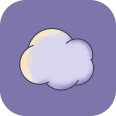
DreamApp, a mental health platform, specializes in the early identification of mental health deviations by analyzing dream patterns, descriptions, and user conversations. Catering primarily to the US-based Gen-Z, DreamApp boasts over 100K monthly active users and has captured 3M dreams, establishing the world's largest dream dataset. Recognizing the intricate relationship between dreams and anxiety, we embarked on a research journey to unveil the depth of this connection.
Our study aimed to address three pivotal questions:
1.
How does a person’s anxiety level influence their dream emotion?
2.
What impact does anxiety have on a person’s waking mood?
3.
Can anxiety intensify the frequency of nightmares?
In March 2023, DreamApp introduced a feature enabling users to self-assess their anxiety levels using the Generalized Anxiety Disorder-7 (GAD-7) assessment scale. From March 2023 to May 2023, 2645 users submitted their GAD-7 assessments. Notably, the gender distribution leaned heavily towards females (74.8%), followed by males (18.3%), nonbinary and others (6.8%). The average age stood at 24.38, and the subsequent graph provides an elaborate breakdown of our respondents' age segments.
Age distributions of users
Of those who took the GAD-7 at least once, 22.9% reported mild anxiety, 31.4% moderate anxiety, and 32.7% severe anxiety. This indicates that a staggering 87% of the respondents grapple with some form of anxiety.
Percentage of Users in Each Anxiety Group
Anxiety and Dream Emotions:
Utilizing our app’s algorithm, we discerned the emotions present in the dreams submitted. By identifying the predominant emotion for each user within a 14-day window preceding their GAD-7 assessment, we discovered a telling connection. Severe anxiety corresponded with fewer neutral dreams and a heightened presence of high-intensity, unpleasant emotions. In stark contrast, those without anxiety showcased a balanced dream palette, marked by a surge in neutral dreams.
Most Frequent Dream Emotion
Most Frequent Dream Emotion
Neutral
Pleasant
Unpleasant
Anxiety and Mood Rating:
Our in-app mood tracker allows users to share a subjective rating of their current mood, with higher rating indicating more emotional pain. By averaging these scores over a 14-day period before their GAD-7 submissions, a clear pattern emerged. Elevated anxiety levels resonated with heightened pain ratings on our mood tracker, underscoring anxiety's profound impact on emotional well-being.
Average Mood Score by Anxiety Group
Anxiety and Nightmares:
Our algorithm efficiently detects nightmares. By calculating the percentage of nightmares each user experienced within the 14 days leading up to their GAD-7 submission, we identified another correlation. Severe anxiety was often accompanied by an increased frequency of nightmares, hinting at the residual effects of daytime distress in the realm of sleep.
Nightmare Percetages Across Different Anxiety Groups
Conclusion
Our exploration into the realm of dreams, underpinned by the vast dataset at DreamApp's disposal, has unveiled profound insights. Dreams, often dismissed as mere nocturnal fantasies, act as detailed mosaics reflecting our daily feelings, pressures, and worries. This study has been instrumental in shedding light on these connections, particularly how prevalent anxieties manifest in our subconscious minds at night time.
The strong link between elevated anxiety and the frequency of distressing dreams or nightmares showcases the relentless workings of the mind. Even in sleep, it processes, reflects, and sometimes amplifies our waking concerns. This underscores the importance of mental well-being and its far-reaching implications, extending beyond our waking hours and deeply into our restful states.
Furthermore, the tangible impact of anxiety on one's waking mood, as evidenced by subjective mood ratings, reiterates the pervasive nature of anxiety disorders. It's not just about feeling anxious; it's about how this anxiety permeates every facet of an individual's life, coloring their perceptions, emotions, and even their dreams.\nHowever, the story doesn't end with anxiety alone. We recognize the intricate relationship between dreams and other mental disorders, such as depression and PTSD. Moreover, the general well-being of an individual is also echoed in their dreams, painting a vivid picture of their emotional and psychological state. Armed with this knowledge, DreamApp is poised to expand its research horizons. We plan to delve deeper into these relationships, aiming to uncover the myriad ways dreams reflect other mental health conditions and the overall well-being of an individual.
As DreamApp persists in its commitment to promoting mental well-being, this research acts as a foundational pillar, underscoring the importance of early intervention and comprehensive strategies. By delving into the nuanced interplay between our conscious and unconscious minds, we can more effectively provide solutions, guidance, and support to those grappling with the intricacies of anxiety and other mental challenges, as reflected in their dreams.
What’s next?
Dreams continue to be a fascinating mirror of our innermost emotions and memories. While our current understanding has shed light on the interplay between dreams and anxiety, there's a vast landscape yet to be explored. Conditions like depression and PTSD, for instance, have profound effects on our dreams, often manifesting as vivid nightmares or recurring themes. At DreamApp, our next endeavor is to delve deeper into these areas. Additionally, we're eager to examine how recognizing dream patterns, recall, and emotions can be employed as health metrics. This would enable users to monitor their mental well-being, using dreams as an indicator. By understanding the intricate dance between dreams and various mental health conditions, we aspire to offer more comprehensive insights and support to our users. Stay with us on this intriguing journey.
Author
Was this page helpful?

Dream App
Free dream interpretations

(1,213)





